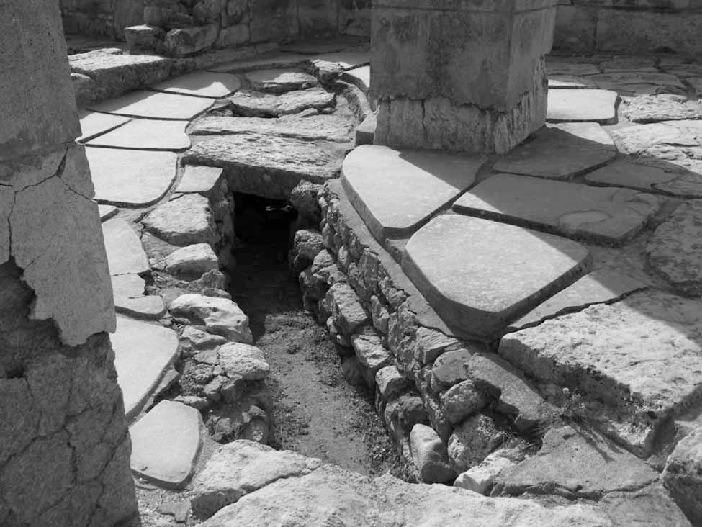Water canalization in Knossos, Crete
Categories/Tags: Utilization of water and wind power; Aqueducts for water management.
Historical context: The water canalization system in Knossos dates back to the Bronze Age, around 2000 Before Common Era (BCE), during the zenith of the Minoan civilization. The Minoans, known for their cultural and technological achievements, developed advanced urban planning and engineering techniques. At the heart of Knossos, the water canalization system played a pivotal role in sustaining the city’s population by providing essential water for various purposes.
Form – main architectural features: The water canalization system in Knossos was a marvel of ancient engineering, comprising a complex network of channels, aqueducts, and reservoirs. The system’s design showcased the Minoans’ ingenuity, utilizing innovative techniques such as underground clay pipes, stone-lined channels, and terracotta conduits. These architectural features allowed for the efficient collection, storage, and distribution of water throughout the city, ensuring a steady supply for domestic use, irrigation, and sanitation.
Function: Integrated into the palace complex of Knossos, the water canalization system served multiple functions essential for the city’s prosperity. Rainwater collection techniques, along with sophisticated drainage systems, played a crucial role in maintaining cleanliness and hygiene within Knossos. The water channels and conduits not only supplied fresh water but also facilitated the disposal of wastewater and sewage, reducing the risk of diseases and ensuring the well-being of the city’s inhabitants. Additionally, the system provided water for irrigation, supporting agriculture and promoting the growth of crops and vegetation essential for sustaining the population.
Lessons for sustainability: The water canalization system of Knossos offers valuable lessons for modern-day sustainability efforts in water management and urban planning. By implementing innovative engineering techniques and prioritizing water conservation, the Minoans created a resilient infrastructure capable of withstanding environmental challenges. These ancient practices serve as a model for contemporary societies seeking to achieve sustainable water management and ensure the long-term viability of their communities.
Cultural heritage and tourism: Today, the archaeological site of Knossos continues to attract visitors from around the world, eager to explore the remnants of Minoan civilization and its technological achievements. The water canalization system stands as a testament to the Minoans’ cultural and engineering legacy, offering insights into their innovative approach to urban planning and infrastructure development. Guided tours of Knossos provide visitors with the opportunity to witness firsthand the reconstructed network of water channels and conduits, gaining a deeper understanding of ancient Minoan society and its reliance on water for sustenance and prosperity. The presence of water features within the palace complex serves as a poignant reminder of the symbolic significance of water in Minoan culture, reflecting its association with purity, life-giving properties, and spiritual importance.
Location: Knossos, Crete – Greece
Water canalization in Knossos, Crete – Greece
Sources
ASOR Resources. (n.d.). Knossos, Crete, Greece: Water Channel and Column. Retrieved March 3rd, 2024, from https://www.asor.org/resources/photo-collection/pid000232/
Lofrano, G. & Brown, J. (2010). Wastewater Management through the Ages: A History of Mankind. The Science of the total environment. 408. 5254-64. 10.1016/j.scitotenv.2010.07.062.


